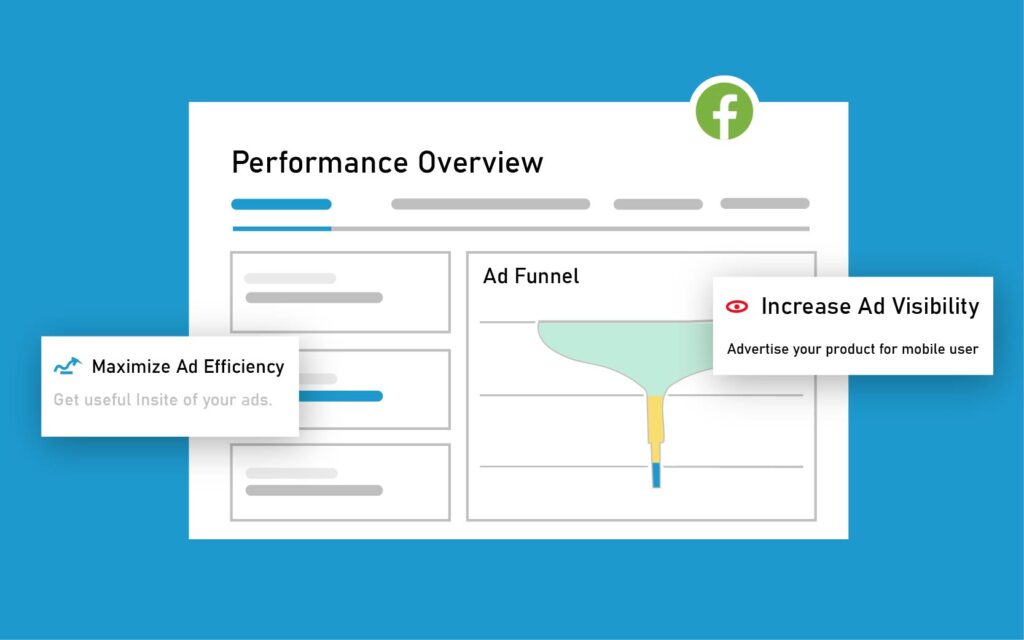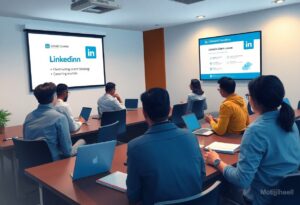
LinkedIn Client Hunting Course in Mohakhali
LinkedIn is more than just a platform for networking; it’s a powerful tool for finding

If you want my team to manage your good marketing for you, click here
Most professionals are aware of LinkedIn’s potential as a powerful tool for networking and client acquisition. In this blog post, I will guide you through the unique aspects of the LinkedIn Client Hunting Course in Khilkhet, an opportunity designed to enhance your skills in leveraging the platform effectively. You’ll learn strategies to target your ideal clients, create compelling connections, and ultimately grow your business. Whether you’re new to LinkedIn or looking to sharpen your approach, I am here to help you take your client-hunting skills to the next level.

To maximize your networking potential, I believe that understanding LinkedIn as a client acquisition tool is important. This platform allows you to connect with potential clients, showcase your expertise, and establish a professional presence. By leveraging LinkedIn’s features effectively, you can position yourself and your services in front of a wider audience, leading to more business opportunities.
Features on LinkedIn include the ability to create a professional profile, share content, join industry groups, and send connection requests. These tools help you establish credibility and engage with your audience. Additionally, LinkedIn’s advanced search functionality allows you to identify and reach out to potential clients effectively.
Around 70% of employers use LinkedIn to vet candidates, emphasizing the importance of having a professional profile. When your profile clearly reflects your skills and experience, it enhances your chances of being noticed by potential clients. An impressive profile sets the stage for fruitful connections and opportunities in your industry.
Overview of your LinkedIn profile should include a professional photo, a compelling headline, and a detailed summary of your experience. Your profile acts as an online resume, so it’s important to highlight your strengths and illustrate how you can provide value to potential clients. By presenting yourself authentically and professionally, you create a strong first impression that can lead to meaningful business relationships.
It is important to identify and target your ideal client to maximize your success on LinkedIn. By focusing on specific industries, roles, and demographics, you can tailor your approach and increase your chances of connecting with prospects who are genuinely interested in your services. In this chapter, I will guide you through the process of defining your target audience and utilizing LinkedIn’s powerful filters for effective audience segmentation.
One of the first steps in client hunting is defining your target audience. This means digging deep into who they are, including their job titles, industries, and pain points. By creating a detailed profile of your ideal client, you can tailor your messaging and establish a stronger connection when reaching out on LinkedIn.
Around 75% of LinkedIn users access their accounts for professional networking, making it a valuable platform for audience segmentation. LinkedIn offers advanced search filters that allow you to narrow down your prospects by industry, location, company size, and more. This targeted approach empowers you to focus your efforts on those who fit your ideal client profile, leading to more meaningful engagements and higher conversion rates.
Targeting specific demographics through LinkedIn’s filters allows me to pinpoint those individuals who truly resonate with my offerings. By applying criteria such as job function and seniority level, I can curate a highly qualified list of potential clients. This strategic segmentation not only saves me time but also ensures that my outreach efforts yield more relevant results, ultimately leading to stronger connections and potential business opportunities.
There’s a wealth of opportunities waiting for you on LinkedIn if you know how to connect effectively with potential clients. By honing your approach to client interaction, you can build lasting relationships that lead to fruitful collaborations. Understanding how to navigate this professional network will empower you to expand your reach and enhance your network in no time.
Above all, I believe that a strategic approach to networking is the key to success on LinkedIn. Engage with your connections by sharing valuable content, participating in discussions, and offering genuine assistance. This not only showcases your expertise but also encourages mutual support, fostering a community that is beneficial for all parties involved.
Crafting a tailored connection request can significantly impact your chances of establishing a meaningful connection. Personalization shows that you’re genuinely interested in the person you’re reaching out to, rather than simply sending a generic invitation. It can increase your response rate and help you stand out among countless other requests.
Considering the vast number of connection requests people receive, taking the time to customize yours can make a difference in your networking efforts. I recommend mentioning a common interest or a specific aspect of their work that resonates with you. This approach not only emphasizes your sincere intent but also opens the door for a more engaging conversation once they accept your request.
Not only is engaging content vital for attracting your ideal clients, but it also poses as a key catalyst for building trust and authority on LinkedIn. Through sharing valuable insights and perspectives, I find that I can effectively showcase my expertise while inviting meaningful interactions with my audience. Your content should encourage dialogue and inspire your audience to connect with you further.
Above all, it’s important to know that different types of valuable content will resonate with your audience. Here are some options to consider:
| Content Type | Description |
| Articles | In-depth knowledge sharing on relevant topics |
| Videos | Visual storytelling to simplify complex concepts |
| Infographics | Visually appealing data representation |
| Short Posts | Quick tips and insights to engage your audience |
| Polls | Interactive elements to spark discussion |
The way you present your content on LinkedIn matters just as much as the content itself. I’ve found that engaging headlines and relevant hashtags can dramatically enhance visibility, keeping your content present in your audience’s feeds. Post during optimal hours for your target demographic and interact with comments to foster community engagement.
Even the best content can go unnoticed if you’re not mindful of timing and format. I recommend using eye-catching visuals and breaking longer text into digestible chunks to hold your audience’s attention. Don’t hesitate to ask questions or include calls to action in your posts, as this will further encourage interaction and promote lasting connections with potential clients.
Once again, I find that LinkedIn groups and communities serve as goldmines for client hunting. These platforms enable you to connect with like-minded professionals, share insights, and discover potential clients in your niche. Engaging with such communities not only expands your network but also positions you as a knowledgeable resource. By actively participating, you enhance your visibility and instill confidence in your expertise, paving the way for opportunities.
With a vast array of groups available on LinkedIn, it’s important to identify and join those that align with your industry and interests. Use relevant keywords to search for groups, and don’t hesitate to explore demographics such as size and engagement level before committing. By selecting the right groups, you ensure that your time spent interacting will be productive and beneficial.
Below, I emphasize the importance of not just being a passive member in these groups, but rather engaging actively in discussions. Sharing your expertise, commenting on others’ posts, and asking insightful questions can significantly enhance your visibility. The more value you contribute, the more likely you attract potential clients who appreciate your knowledge.
Another effective strategy is to tailor your contributions to the specific needs and interests of group members. Consider hosting a live Q&A session or sharing valuable resources that can solve common problems in the community. When you consistently add value, you position yourself as a go-to expert, making it easier for potential clients to seek your services when they require assistance.
For anyone looking to optimize their LinkedIn strategy, analyzing your efforts is crucial. Understanding what works and what doesn’t can help you refine your approach, leading to better client engagement and growth. By regularly reviewing the performance of your posts and interactions, you can make informed decisions and elevate your professional presence on the platform.
The first step in analyzing your LinkedIn efforts is tracking engagement and growth metrics. Pay attention to likes, comments, shares, and connection requests, as these indicators reveal how well your content resonates with your audience. By monitoring these metrics over time, you can identify patterns and pinpoint content that drives the most interaction.
Across all platforms, the key to success lies in flexibility. Using analytics data to adjust your LinkedIn strategy will enhance your chances of attracting the right clients. It’s not enough to just create posts; you should analyze what types of content yield the highest engagement and focus on producing more of it. Testing different formats, such as images, videos, or articles, will help you understand what resonates with your audience.
This iterative process allows you to fine-tune your messaging and approach continually. By reviewing your analytics periodically, I stay attuned to shifts in my audience’s preferences, enabling me to adjust my content strategy effectively. Over time, this data-driven approach helps me not only connect with a broader audience but also engage with potential clients more meaningfully.
With this in mind, I encourage you to take advantage of the LinkedIn Client Hunting Course in Khilkhet. By mastering the strategies I share, you can effectively leverage LinkedIn to connect with potential clients and enhance your professional network. This course will equip you with practical skills and insights to stand out in today’s competitive market. I am confident that your active participation will lead to significant growth in your client acquisition efforts. Commit to your success, and let’s transform your LinkedIn presence together!
It is really a win-win situation 😲 for you to join the “Digital Wit Academy” Facebook group and gain the most updated information about different digital marketing strategies.

Kamrul Hassan is the founder and CEO of Digital Wit Academy. As you know, Digital Wit Academy is a fast-growing Bangla e-learning platform that provides quality knowledge and support to students. Kamrul Hassan is a government-certified Professional Digital Marketing Expert and a trainer/mentor in the Youth and sports ministry projects of the BD government. His Team Digital Wit Academy consists of well-educated and highly motivated core team members who are very friendly. They believe in quality support to make the students’ careers more successful. Support is the best part of the Digital Wit Academy courses.

Stop wasting money and unlock the hidden potential of your advertising skills with Digital Wit Academy.

LinkedIn is more than just a platform for networking; it’s a powerful tool for finding

Most professionals are aware of LinkedIn’s potential as a powerful tool for networking and client

Course participants will discover the art of leveraging LinkedIn client hunting to attract effectively. In

With the rise of digital networking, mastering LinkedIn for client acquisition has never been more

There’s an exciting opportunity for professionals seeking to enhance their networking skills through my LinkedIn
Hey, I’m Kamrul Hassan, the mastermind of Digital Wit. I’m confident to grow your brand. My only question is, will you grab the opportunity?